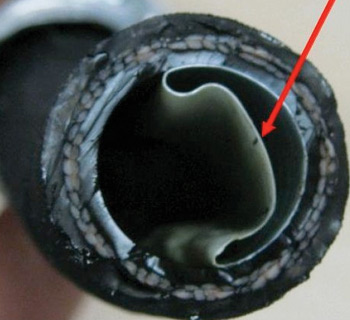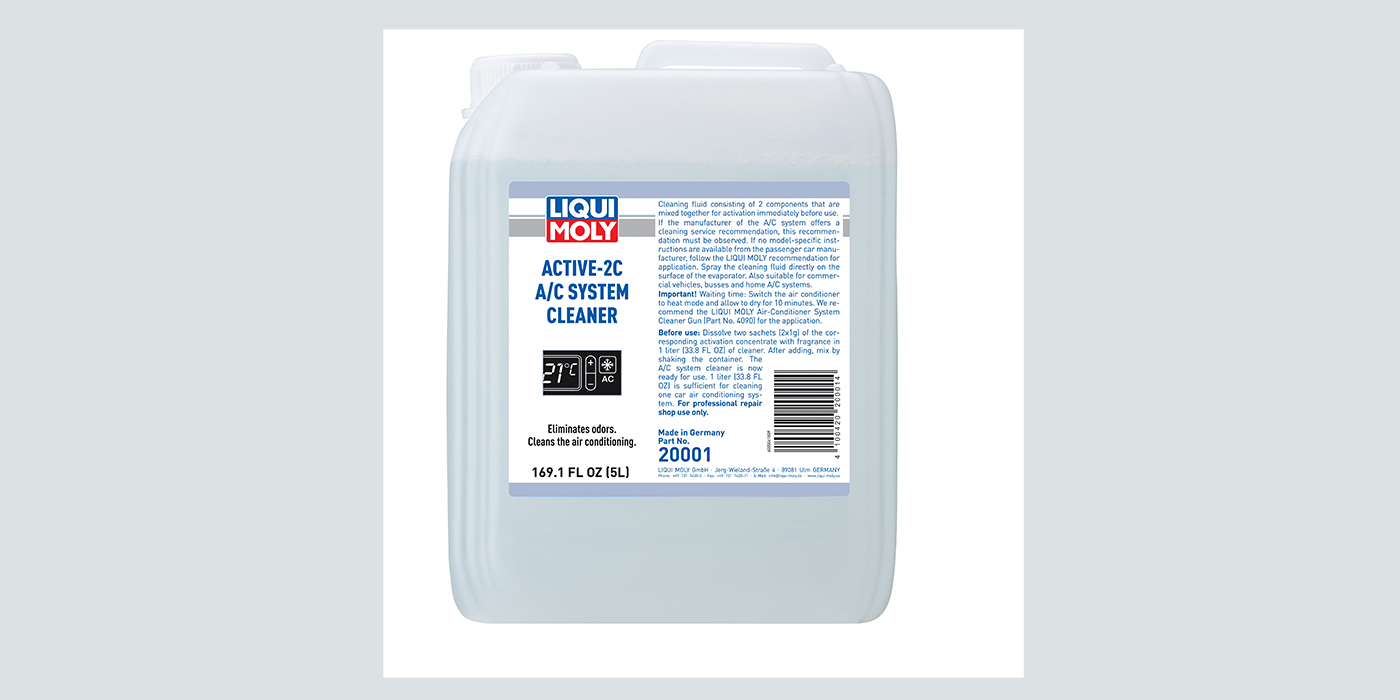If an owner of a 2004 C 240 Sedan complains of no or insufficient cooling output, it could be caused by the refrigerant line (engine-side low-pressure line, from compressor to connecting point upstream of expansion valve), whose inner coating has come loose in the flexible section of the hose, causing constriction.
Service Procedure:
Note: The air conditioning system may not be evacuated before test steps 1-3; this could affect the test result.
1. Start the engine, activate the air conditioning on the control panel (max. cold, blower setting 3), medium engine speed.
2. Connect the pressure gauge to the high- and low-pressure sides.
3. Check whether the refrigerant compressor is delivering refrigerant (the limiter on the belt pulley turns or pressure builds up in refrigeration circuit). If there is refrigerant, eliminate this fault.
If the refrigerant compressor builds up pressure:
4. Read off the high- and low-pressure values from the pressure gauges after approximately 5 minutes.
If the installation space does not permit reliable temperature measurement using an infrared thermometer, continue to step 6.
5. If the low pressure is noticeably high (> approx. 60 psi) and the evaporator temperature is significantly too high at the same time (> approx. 50° F), use an infrared thermometer to check the engine-side low-pressure line against the refrigerant flow direction (from the compressor to the connecting point upstream of the expansion valve). If there is a noticeable temperature drop in the line (Delta > 45° F), continue to step 6. 
6. Dissemble the engine-side low-pressure line (from compressor to connecting point upstream of expansion valve).
7. Use an endoscope to check the line for clear passage. (Checking for a clear passage using welding wire or similar is not permissible, as this can damage the inner hose and cannot detect peeling anyway.) See Fig. 1.
8. Replace the line if you detect any constriction.
Courtesy of ALLDATA.











